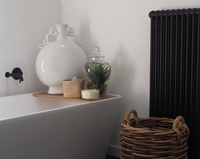Croeso y Gogledd! - North Wales Online Community
- Home
- Add Listing
- Accommodation
- -- B & B
- -- Camping & Caravanning
- -- Guesthouses
- -- Hotels
- -- Self Catering
- Attractions
- -- Clubs
- -- Great Outdoors
- -- Restaurants & Cafes
- -- Theatres & Cinemas
- Blogs and Personal Sites
- Community
- Health & Beauty
- Property
- -- Estate Agents
- -- Mortgage Brokers
- -- Tradesmen
- Services
- -- Business to Business
- -- Finance
- Shopping
- -- Amenities
- -- DIY
- -- Fashions
- -- Food
- -- Home
- -- Motoring
- -- Pets
- Forums
- About Gogledd
- Living in North Wales
- Blog
Quick Search
 If you are in need of plumbers in Llandudno you should choose one that not only can install your bathroom but also design it too! If you are looking for Bathrooms North Wales, your best bet is to go with someone that has a wealth of experience. However, if you would prefer to go it alone take a look at some of these simple plumbing maintenance techniques. Replacing TapsAround the home your plumbing will need attention from time to time and it is very useful if you can complete some of the basic steps yourself. Here are some simple tips for replacing your own taps. All the supplies you need can be found at your local DIY store and you can seek their advice if you have an unusual sink set up. First make sure you have the plumbing supplies you require before beginning. You will naturally need the new tap you have picked out, an adjustable wrench and plumber’s tape. The most important step in replacing your tap is to make sure the water is off first. Under your sink you should find some valves. You can isolate the water to either the hot or cold tap by turning off the isolating penny valves. Next run your tap until the water stops and you will know the pipe is empty. Under the sink your current tap will have a tail. This is where the wrench comes in to play. You need to unscrew the connector nuts that attach the tap tail to your water pipe. Be sure not to lose the nuts. The next step is to locate the nut that holds the tap in place. Replacing a tap is very easy and the hardest part is merely located the right nuts under the sink. Use your wrench to unscrew the nut and then remove the old tap. Now you can attach the tail of your new tap to the water pipe using the connector nut again. You can use your plumber’s tape around the joint then tighten first by hand and then with the wrench. Now you will have successfully changed a tap all by yourself. RadiatorsAnother useful skill that everyone should learn is how to bleed their radiators. Radiators may often seem cooler than they should or cooler at the top than the bottom. This means they probably need bleeding. All you will need is the vent key, a cloth and possibly some towels. The most important thing to remember if you have never bled a radiator is to turn the central heating off first. You must let the radiator cool down completely. If you attempt to bleed a radiator that has even remotely hot water in it, you could seriously burn or even injury yourself. The actual bleeding of the radiator is quite easy. Simply insert your vent key into the bleed valve which you will normally find located on the side of the radiator. The cloth is to hold under the key and valve for grip and safety. Place your towels underneath the valve to prevent wetting your floor if water should come out in the bleeding process. Turn the key anti-clockwise about a quarter turn, a half turn at most. Air will hiss out of the valve as you do this, and you should allow this to happen but remember to turn slowly in case water comes out. Allow water to bubble from the open valve. Once the bleeding is complete simply turn the key clockwise to close the valve and then test the radiators by turning on your central heating. These simple tasks are easily completed and by following simple steps you can feel in charge of your own plumbing. |
Archives
September 2023
July 2023
May 2023
April 2023
March 2023
January 2023
December 2022
October 2022
September 2022
August 2022
July 2022
June 2022
May 2022
October 2021
July 2021
February 2021
December 2020
November 2020
October 2020
September 2020
June 2020
May 2020
April 2020
March 2020
January 2020
November 2019
October 2019
September 2019
May 2019
August 2018
July 2018
June 2018
May 2018
April 2018
March 2018
February 2018
December 2017
November 2017
October 2017
September 2017
August 2017
July 2017
June 2017
May 2017
March 2017
February 2017
January 2017
November 2016
July 2016
April 2016
March 2016
December 2015
November 2015
August 2015
May 2015
December 2014
November 2014
October 2014
April 2014
December 2013
December 2012
November 2012
September 2012
